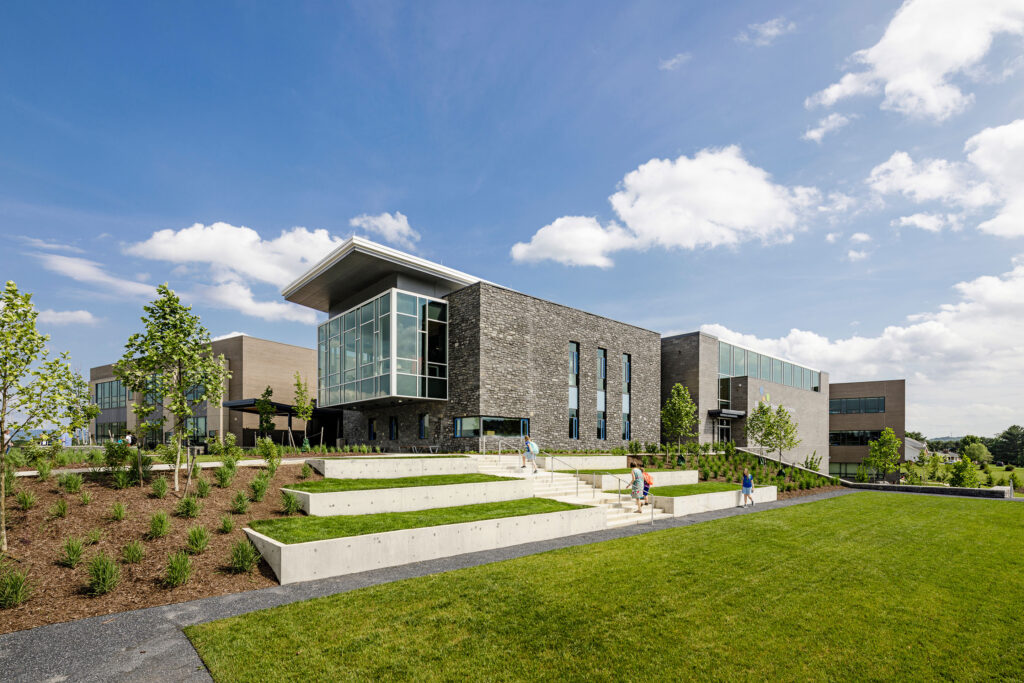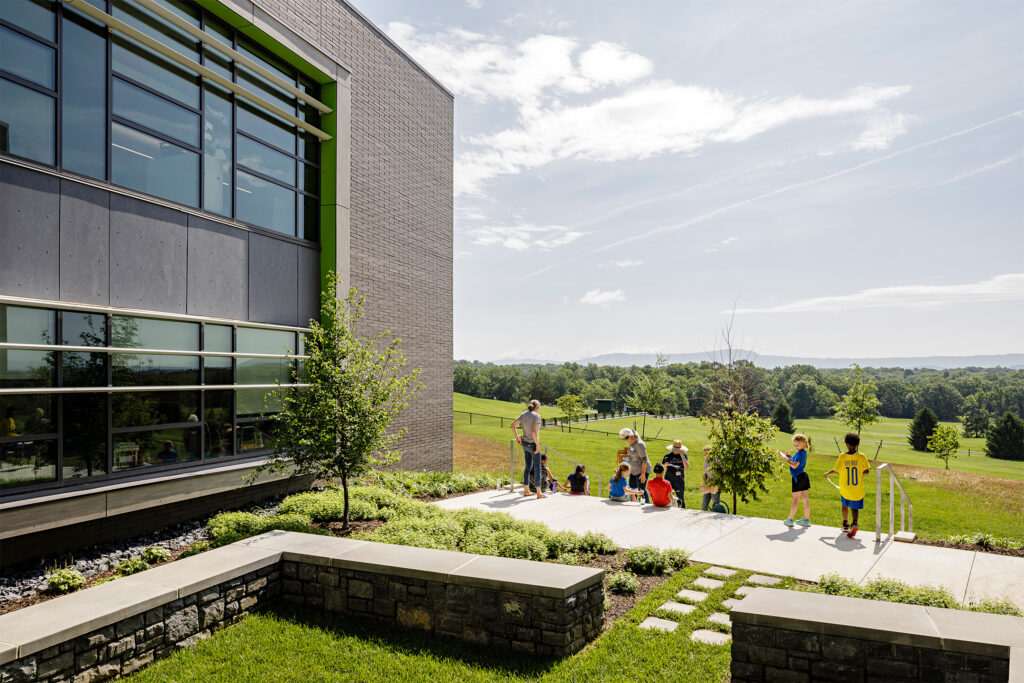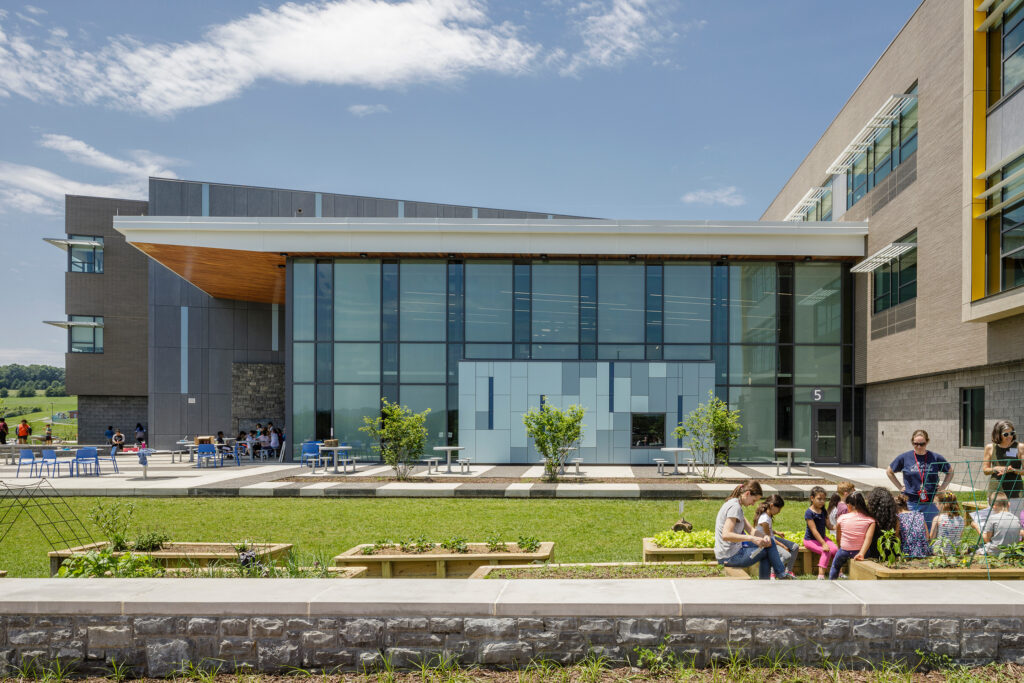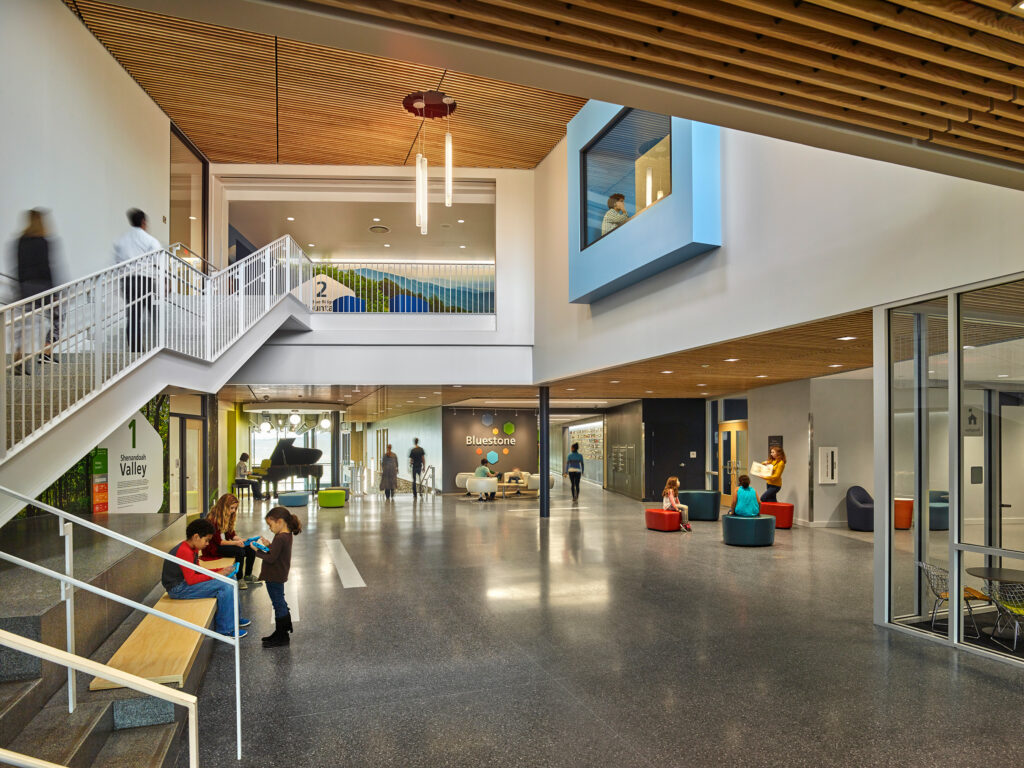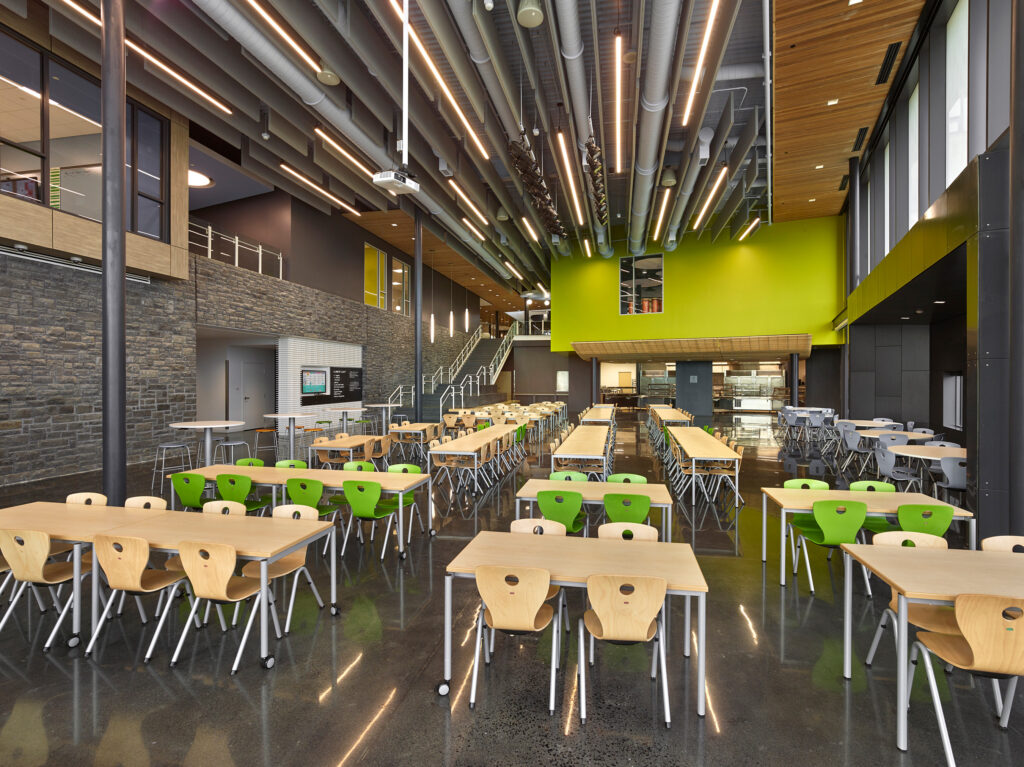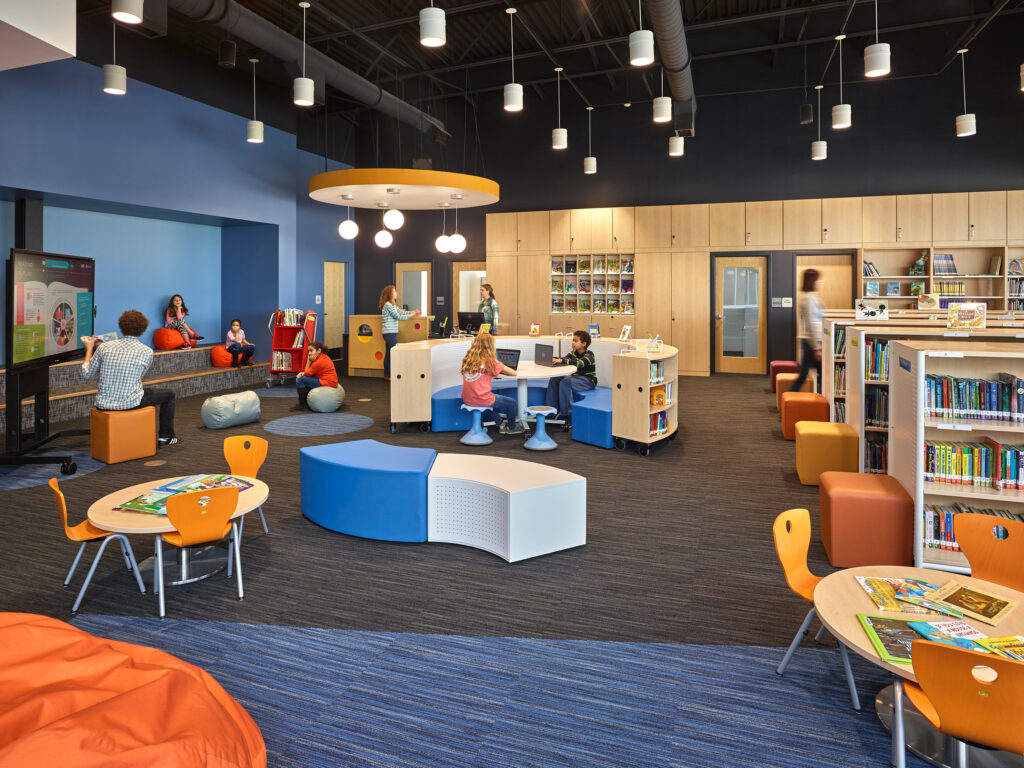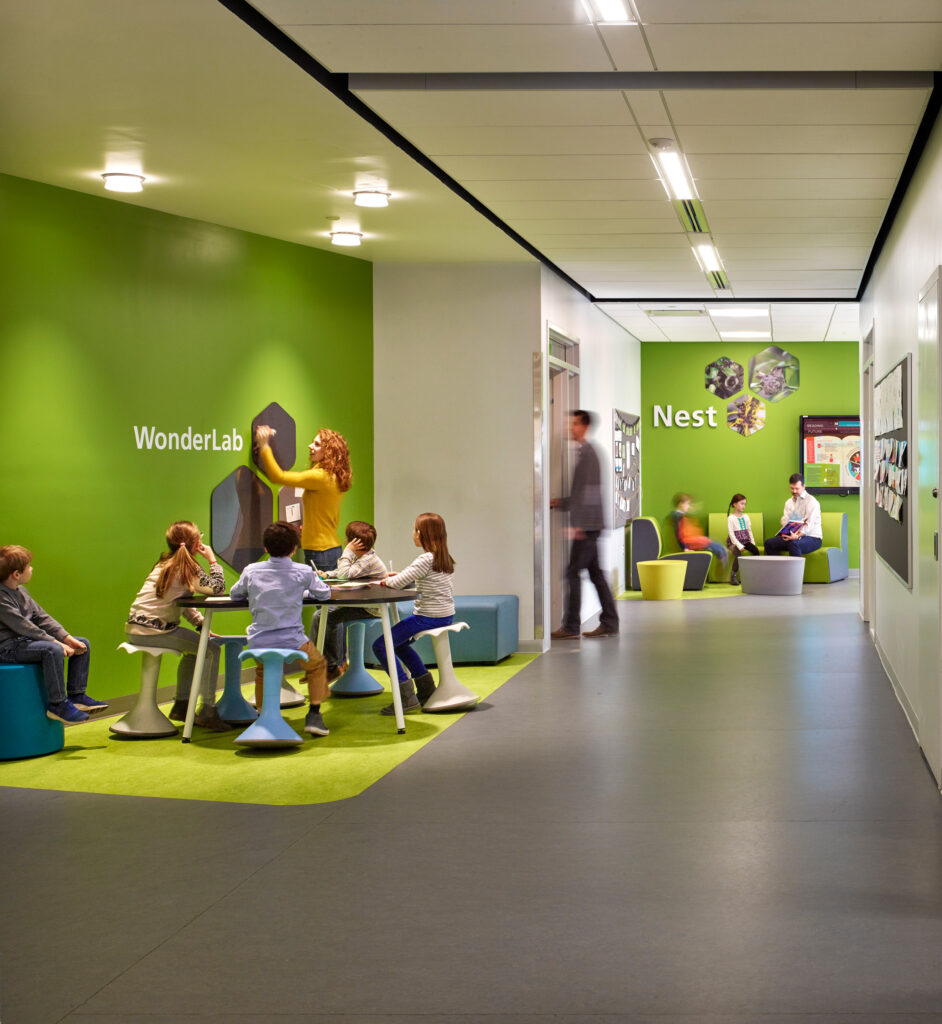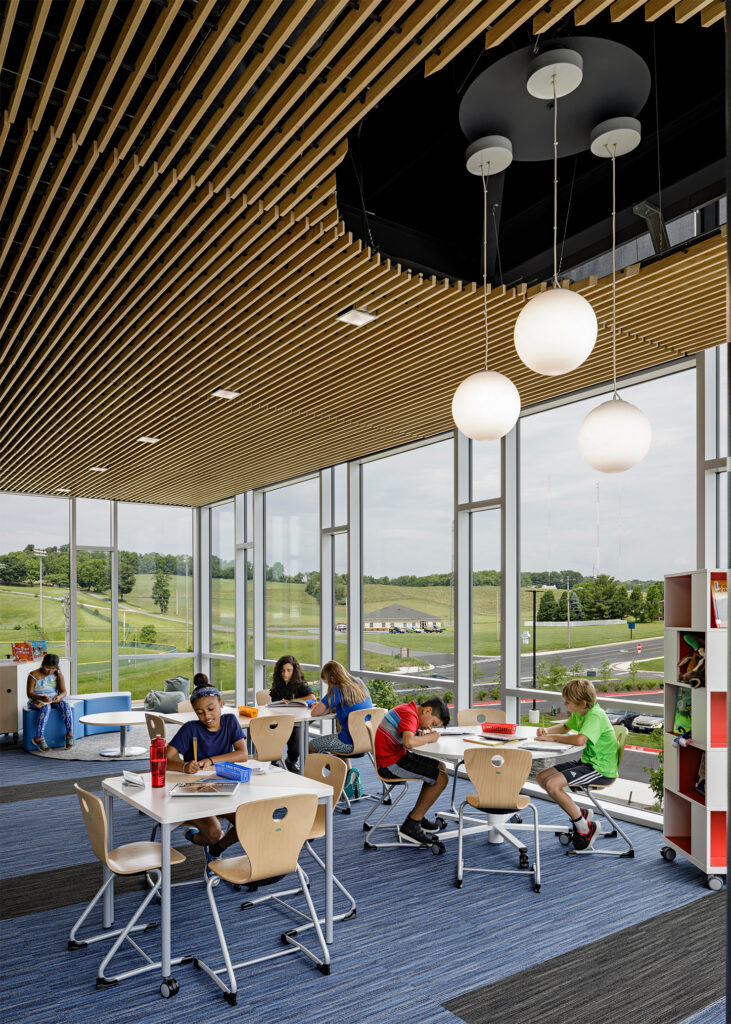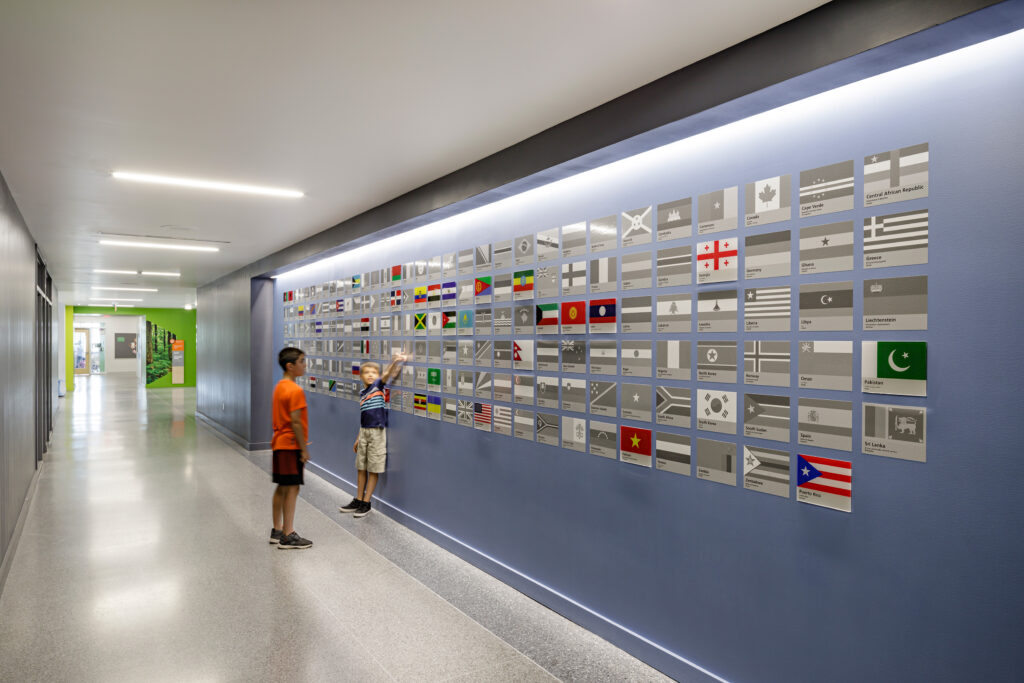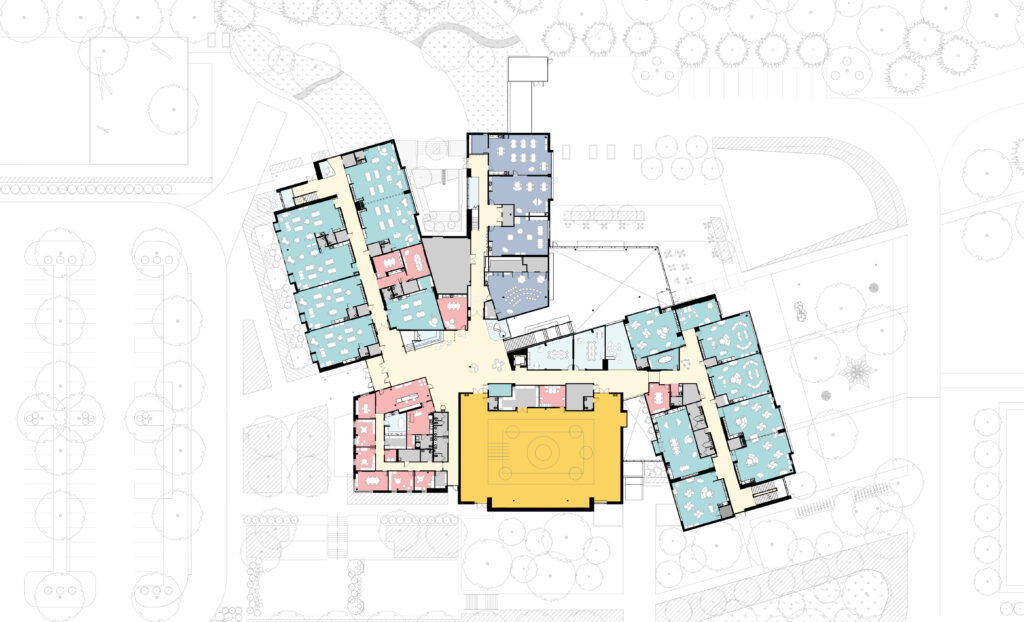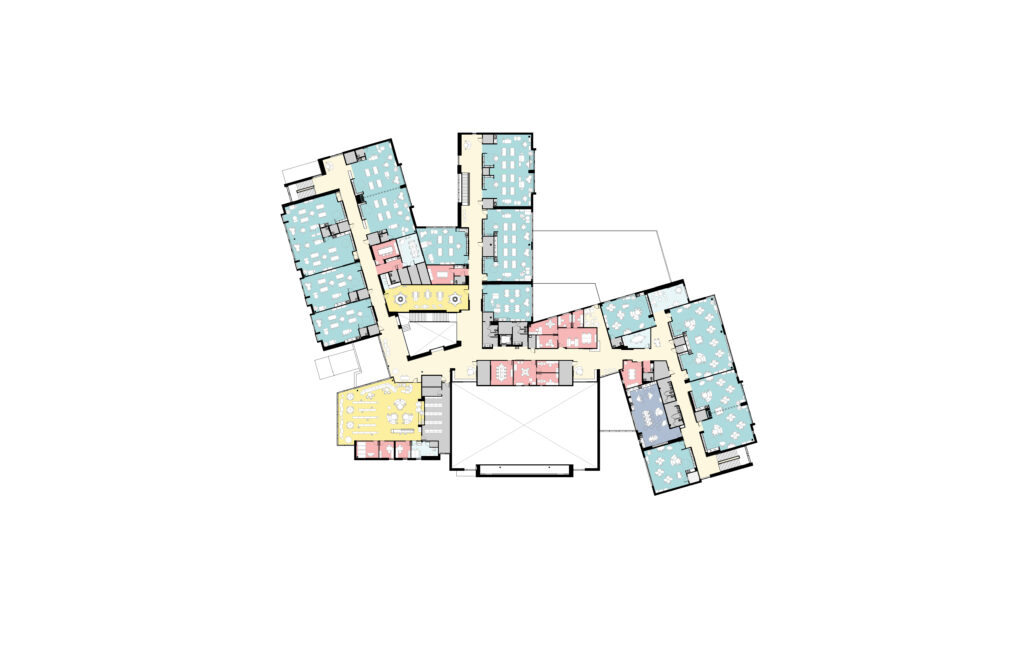
Bluestone Elementary School
Harrisonburg City Public Schools has experienced the highest school enrollment growth rate in Virginia over the past 10 years. To meet the needs of the student body, the design emphasizes a diversity of spaces and scales for learning while creating welcoming public areas that embody values of inclusivity, creative expression, and communal learning.
Project Details
- Client: Harrisonburg City Public Schools
- Location: Harrisonburg, VA
- Scope: New Construction
- Completion: 2017
- Size: 103,000 SF
- Performance: LEED Gold; Net-Zero Energy Ready | EUI 19 kBTU/sf/year (measured) | 66% reduction (regional CBECs 2003 K12 School baseline)
Designed to address rapid population growth in Harrisonburg, Bluestone Elementary School embraces the cultural diversity of “the friendly city”. This new building helps the diverse student body relate to the larger world in a learning environment designed just for them.
Early in the design process, educators expressed a desire for team teaching and flexible spaces. The resulting design promotes teacher and student collaboration and individualized learning in “learning neighborhood” environments. These neighborhoods support differentiated opportunities for collaboration in core learning spaces, circulation areas, teacher resource rooms, and “maker” hubs that can be rearranged to support desired levels of authority and collaboration.
Public spaces radiate outward from the lobby and create a welcoming arrival sequence, and wayfinding themed around local geography supports orientation. Expansive views of the nearby mountains and abundant play landscapes reinforce the students’ connection to the natural world.
The school incorporates several high-performance building initiatives at a range of scales. Such features include reducing water and energy use, incorporating healthy low-emitting materials, promoting natural daylighting and abundant views to nature, ensuring healthy air quality, employing innovative stormwater capture and management, and providing a high-performance envelope design.
So many schools seem to isolate children and teachers; this school brings people together and contributes to a sense of trust. That was our goal from the beginning.
Collaborators
MEP Engineering: CMTA
Structural Engineering: Fox & Associates (now Springpoint Structural)
Civil Engineering: Gay & Neel
Landscape Architecture: JJM Design (now Waterstreet Studio)
Environmental Graphic Design + Wayfinding: Iconograph
Contractor: Nielson Builders
Project Photography: Alan Karchmer and Lincoln Barbour
Additional Drawings

Student-Centered Learning Model

Learning Labs

Exploded Axonometric
Sustainability
Designed to be net-zero ready, the project is tracking an energy use index (EUI) of 18. The school incorporates various sustainable strategies:
- Reducing water and energy use
- Incorporating healthy, low-emitting materials
- Promoting daylighting and views to nature
- Ensuring healthy air quality
- Employing innovative stormwater capture
- Providing a high-performance envelope
Net-zero energy performance was particularly challenging given the orientation of key views from the site and the project’s three-story massing. To deliver the best energy performance possible, the building uses shading, roof overhangs, glass treatments, and careful placement of instructional spaces to mitigate less than ideal solar orientation. The building steps down towards the south to maximize the area available for roof-mounted photovoltaics. Harrisonburg City Pulic Schools is contracting with a provider to install solar arays at all six of its schools.
Post-Occupancy Evaluation

Post-Occupancy Evaluation
VMDO worked with the Center for the Built Environment (CBE) to develop a custom post-occupancy evaluation module in conjunction with CBE’s standard K-12 post-occupancy survey. Bluestone is the first VMDO project to deploy this new questionnaire, which asks staff questions about safety, community, health and wellness, and sustainability. Feedback on the design includes the following results—all of which exceeded CBE’s K-12 benchmark averages.
Read More
Awards Received
- Education Facility Design Award, AIA Committee on Architecture for Education
- Architecture Merit Award, AIA Central Virginia
- Livable Buildings Award, UC Berkeley Center for the Built Environment
- Project of Distinction, Association for Learning Environments
- 2nd Place Academic Project, Virginia Energy Efficiency Leadership Awards
- Platinum Design Award, Virginia School Boards Association
- Best Design Award, Virginia Association for Learning Environments
- Outstanding Project, Learning By Design
